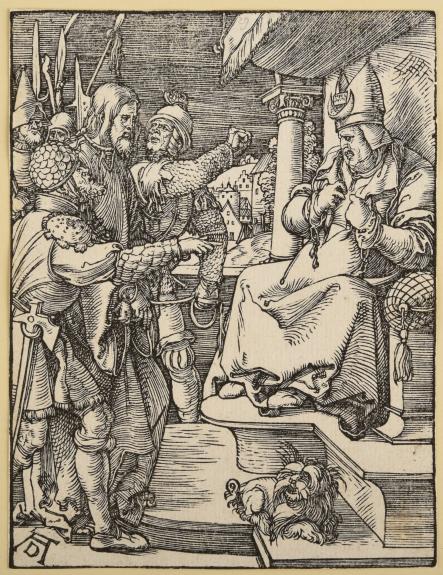
It’s been an exciting summer for art historians and fans of Albrecht Dürer, one of the most important figures of the German Renaissance. Less than a month after the sensational discovery of a long-lost Dürer engraving at a flea market in France, the Museum Kunsthaus Kleve in North Rhine-Westphalia has now discovered a 500-year old woodcut print by the important artist.
According to German news channel WDR, the work was spotted by two art students who were tasked with inspecting the Wörner collection. Comprising about 5,000 artworks, the collection was bequeathed to the museum by the collector couple Gustav and Rose Wörner, who were well-known urban architects in Germany.
The students, Leonard Friedrichs and Hannah Eckstein, spent weeks in the museum’s storage rooms examining and cataloging the art works. The impressive collection is a “journey through 500 years of art history,” said museum curator Valentina Vlasic, who was thrilled with the discovery as this is the first work by Dürer to enter the museum’s permanent collection.
The extraordinary find was corroborated by further research, but the museum curator had no doubts it would. “It’s an original Dürer,” Vlasic said, “I recognized it immediately.” The woodcut measures 10 by 15 centimeters and depicts Christ appearing before Caiaphas; it is reportedly in “very good condition,” bearing Dürer’s signature. Even the small dog that often appears in Dürer’s works is clearly featured in the foreground.
The work belongs to the cycle “Die kleine Holzschnittpassion“, which Dürer created between 1509 and 1511. However, the museum’s print is extremely rare, as it was a test print that was eventually not included in the Passion cycle and is therefore one of a kind, according to Vlasic.
“The passepartout even includes a warning that there’s a fake version of this woodcut, and how to recognize it,” she added.
The work will be on view at the museum from October 2, as part of a show featuring the Wörner collection.